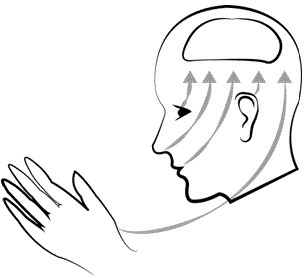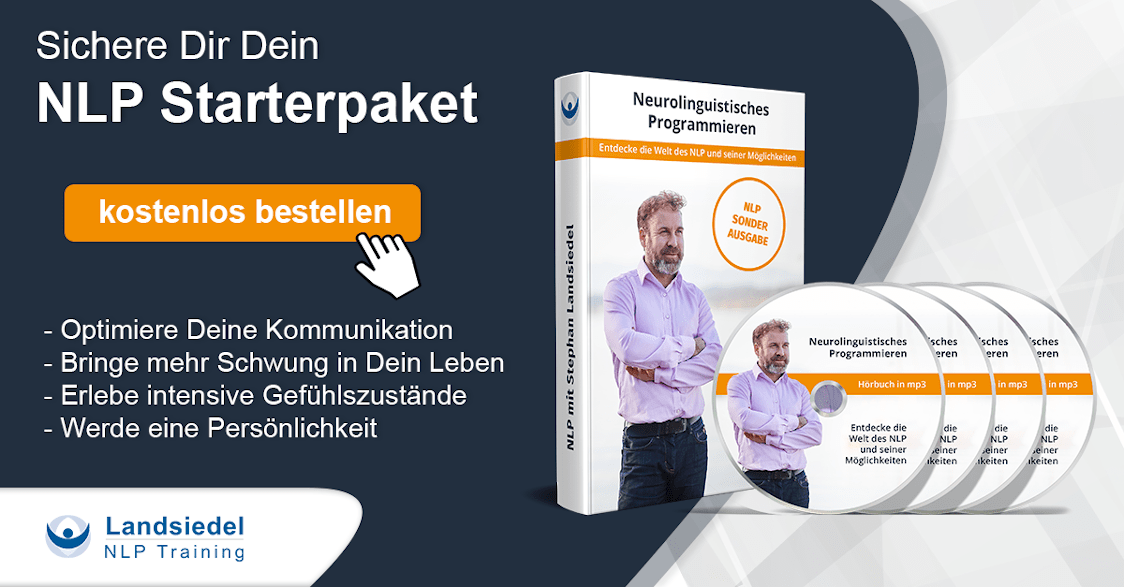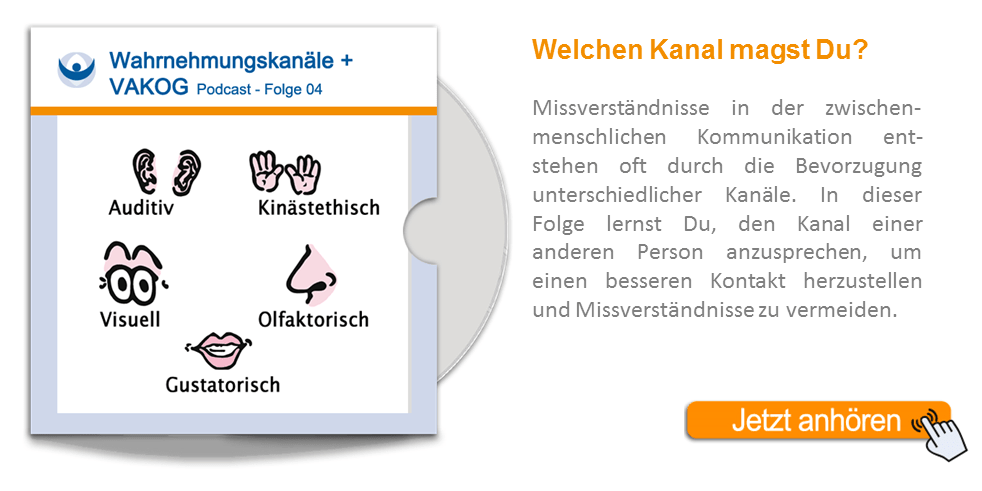VAKOG

Immerse yourself in the sensory world of your conversation partners to achieve deeper understanding and connection. This “sensory awareness” opens up new levels of communication.
We experience the world through our senses. External stimuli, such as a sunbeam or a friend's voice, are transmitted via our nervous system as electrical or chemical signals to our brain, where images, sounds, and sensations are created. These represent the external stimuli. In NLP, we refer to these as representational systems.
Table of Contents

What Does VAKOG Mean? Definition
The following letters in the VAKOG system stand for:
| V | Visual | Seeing |
| A | Auditory | Hearing |
| K | Kinaesthetic | Touch / Feeling |
| O | Olfactory | Smell |
| G | Gustatory | Taste |
According to the NLP model, people use these five sensory channels with different priorities. Some are highly visual and use little information from the other channels. When people with different dominant representational systems communicate, misunderstandings can occur.
Example sentences:
- Take a look at how many more expressions you can find if you keep your eyes open.
- Listen around for the phrases that catch your ear!
- You’ll easily grasp even more terms as you go.
- Soon you’ll have a good sense for this language and develop a taste for it!
The preferred or current dominant representational system can be identified through keywords or body cues such as speech speed or breathing. You can find a list of words for each representational system here: Three Types VAK.
Stephan Landsiedel Explains: What Is VAKOG?
Linguistic Access Cues
Linguistic access cues for a particular representational system are especially indicated by the verbs, nouns, and adverbs that a person tends to use. These preferences for expressions related to seeing, hearing, feeling, smelling, and tasting can vary by situation.
Examples
| Visual |
| See |
| Look |
| Bright / Dark |
| Perspective |
| Clear view |
| Focus |
| Enlighten |
| Auditory |
| Loud / Quiet |
| Sounds good |
| In harmony |
| Echo |
| Listen |
| Hear |
| Kinaesthetic |
| Touch |
| Hold on |
| Feel |
| Pressure |
| Warm / Cold |
| Olfactory |
| Smell |
| Scent |
| Sniff |
| Odor |
| Gustatory |
| Taste |
| Sweet |
| Flavor |
| Delicious |
| Bitter |
VAKOG Sentences
Visually oriented people sound like this:
- Can you show me other houses in the area?
- I need to see more before I can picture making a decision.
- I see things more clearly now, but I’d like to look at some other options.
- Look, I’m still not sure I’ve seen everything – I’m still in the dark.
Auditory people might say:
- Tell me more about your product; I’ve heard good things.
- I’m not satisfied with what I’ve heard so far.
- That sounds great; everyone’s talking about it.
Kinaesthetic people might say:
- I need your support with this. I can’t handle it alone.
- I’ll take it slow – I don’t want to rush into things.
- I have a good feeling about it.
- That presentation really moved me.
VAKOG Idioms
Visual: “I can’t stand to watch this.” / “It’s clear as day.”
Auditory: “That rings a bell.” / “I can’t hear it anymore.”
Kinaesthetic: “It hit me hard.” / “He’s under pressure.”
Olfactory: “I can’t smell a thing.” / “Something smells fishy.”
Gustatory: “Sweet success.” / “A bitter pill to swallow.”
Sense-Specific Language in NLP
Exercises
The Book Report
Three people read the same book and describe their impressions. Listen for sensory cues!
- The first says the examples illuminated the topic and were clearly presented.
- The second disagrees with the tone, saying it sounds too sharp and dissonant.
- The third feels that the book was balanced and deeply moving.
The Sales Letter
- Dear Sir, as discussed on the phone, I’m sending you the set of books and the seminar recording. I hope the message comes through clearly and I’ll hear from you soon.
- Dear Sir, I’ve looked over your letter carefully. I see the problem and send you our photo set and videos. I hope you’ll watch them soon to get a good picture of us.
- Dear Friend, your recent visit touched me deeply. I can truly feel your concern. I look forward to seeing you again and wish you all the best.

 Deutsch
Deutsch English
English Français
Français 中文
中文 Español
Español नहीं
नहीं Русский
Русский